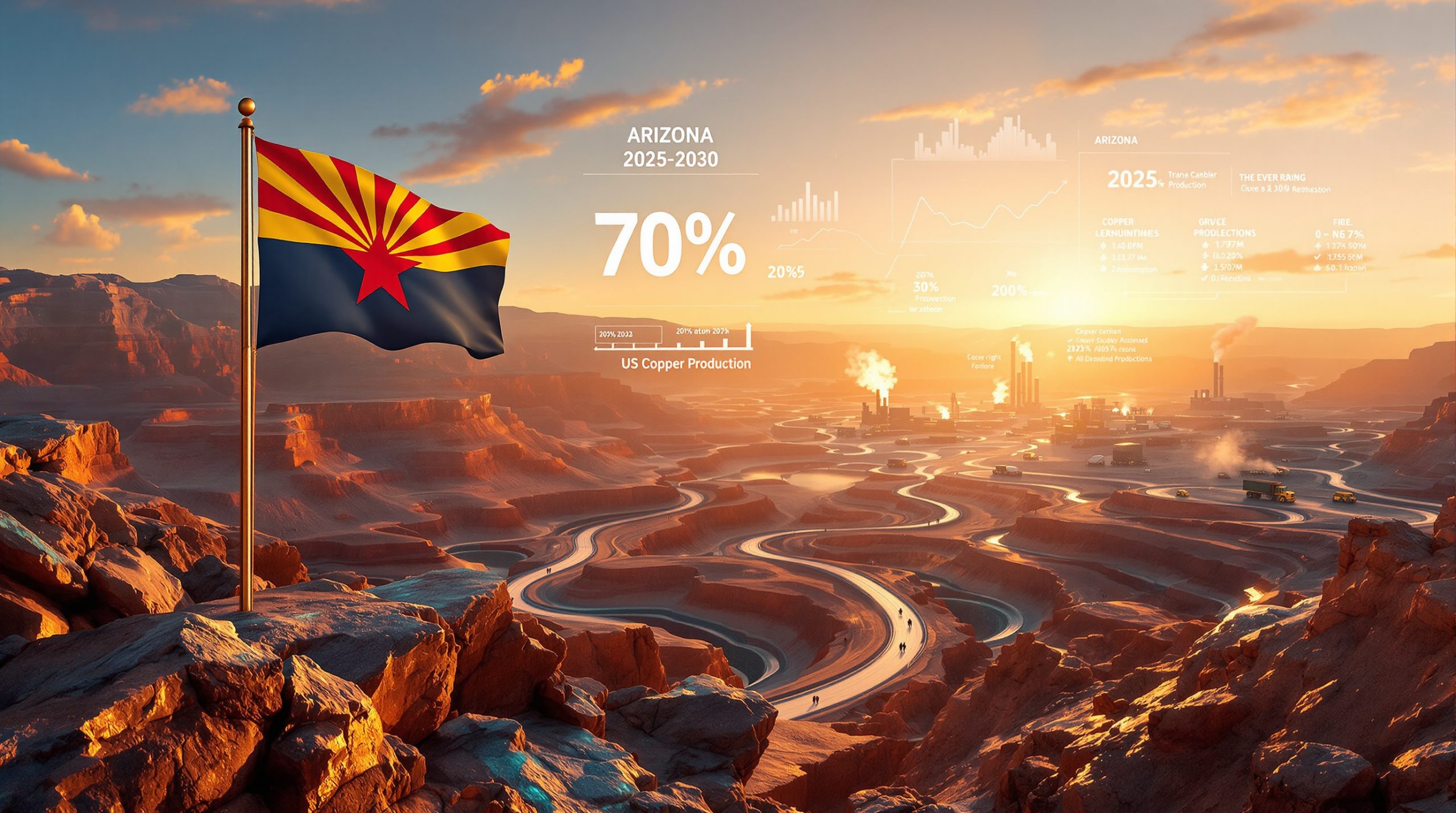Understanding the Copper Market in an Era of Tariffs
The global copper market finds itself navigating uncharted waters as unprecedented tariffs reshape trade flows and investment decisions. With copper sitting at the intersection of geopolitical tensions and the green energy transition, industry participants face both challenges and opportunities. This comprehensive analysis explores how the copper market and impact of tariffs are affecting the landscape and why industry leaders maintain confidence despite short-term volatility.
What Are the Current Tariffs Affecting the Copper Market?
The copper market is currently experiencing significant disruption from a complex web of tariffs and trade actions. The United States has imposed 125% tariffs on Chinese copper imports, triggering retaliatory measures from Beijing with 84% tariffs on US copper shipments set to take effect at 12:01 AM ET on April 10, 2025. This escalation represents a dramatic intensification of trade tensions between the world's two largest economies.
Beyond the US-China dynamic, the broader trade landscape remains in flux. While the United States temporarily paused reciprocal tariffs on 60+ countries for 90 days, a universal 10% tariff continues to apply to most imports. Notably, copper currently enjoys exemption from this baseline tariff—a status that Andrea Hotter of Fastmarkets describes as a temporary "reprieve" for the industry.
Perhaps most concerning for market participants is the ongoing Section 232 investigation into copper imports. Under the Trade Expansion Act of 1962, this process involves a 270-day investigation to determine if copper imports threaten US national security. Should this investigation conclude affirmatively, additional copper-specific tariffs could be implemented across multiple trading partners regardless of existing measures.
Katie Jackson, Rio Tinto Copper CEO, noted: "US interest in a domestic copper industry is fundamentally positive… governments are paying more attention to supply chains." This statement reflects a growing recognition that copper's strategic importance transcends normal commercial considerations.
How Are Tariffs Creating Market Volatility?
The immediate impact of these tariff measures has been market fragmentation and price volatility. Regional price differentials have emerged, with the US Midwest copper premium surging 18% year-to-date to $0.25/lb on an LME plus CIF basis. This premium represents the additional cost US consumers pay over global benchmark prices—a direct consequence of trade barriers.
These disruptive effects extend beyond pricing mechanisms. Supply chains are undergoing significant reconfiguration, with US copper imports from Chile rising 22% in Q1 2025 according to US Customs data. Meanwhile, Fastmarkets analysis indicates that tariffs are "forcing rerouting of 300,000 tonnes per year of Asian copper to secondary markets," creating inefficient trade flows.
For domestic US operations like Rio Tinto's Bingham Canyon (Kennecott Utah Copper), tariffs create potential competitive advantages. The operation produced 193,200 tonnes of refined copper in 2024, serving domestic customers who now face higher costs for imported alternatives. However, this benefit is counterbalanced by challenges in the company's global portfolio.
"We see the tariffs and geopolitical backdrop as market volatility insights rather than a fundamental shift," Jackson explained. "Our KUC operations demonstrate both the opportunities and challenges these measures create."
The transportation sector offers another window into tariff impacts, with Pacific freight rates increasing approximately $35/tonne since tariff implementation. Downstream, cable manufacturers report 7-12% input cost increases according to a recent NEMA survey—costs ultimately passed to consumers of electrical equipment.
Why Do Industry Leaders Maintain Long-Term Confidence?
Despite near-term disruptions, copper industry executives maintain their long-term optimism. This confidence stems from fundamental demand drivers that tariffs cannot easily alter. Global electrification continues to accelerate, with copper demand projected to grow at a 4.5% CAGR through 2040 according to CRU Group analysis.
Copper's unmatched electrical conductivity (59.6×10⁶ S/m versus aluminum's 37.8×10⁶ S/m per IACS standards) makes it irreplaceable in many applications. As Jackson succinctly put it: "Copper is lucky enough to be the best way of conducting electrical current, and that's not changing any time soon."
The basic supply-demand dynamics also remain largely intact. Geographic distribution of copper resources follows geological rather than political boundaries, while demand centers (particularly in renewable energy and electric mobility) continue expanding regardless of trade tensions. According to CESCO, without new projects, the copper market could face an 8.9 million tonne deficit between 2025-2035—a fundamental imbalance that transcends current trade disputes.
Technical constraints further reinforce industry confidence. Mine development typically requires 15-20 years from discovery to production according to ICSG data, meaning today's investment decisions reflect long-term strategic thinking rather than responses to current tariffs. Additionally, electrification trends create structural demand growth—electric vehicles require 2.5 times more copper than internal combustion engines according to IDTechEx research.
"The fundamentals of the market haven't changed," Jackson emphasized. "Our multi-decade investments transcend political cycles."
What Is the US Copper Production Outlook?
Current US copper production falls significantly short of domestic demand, creating both vulnerability and opportunity. Rio Tinto produced 697,000 tonnes of mined copper globally in 2024, with 248,000 tonnes of refined copper. Of this, Kennecott Utah Copper (KUC) contributed 123,400 tonnes of mined copper and 193,200 tonnes of refined copper—making it a cornerstone of US domestic supply.
Expansion plans are underway to increase this production. The North Rim Skarn (NRS) project at Bingham Canyon represents a $1.2 billion investment expected to deliver 250,000 additional tonnes of mined copper through 2033. Technical reports indicate ore grade improvements from 0.4% to 0.63% in 2024, enhancing project economics.
Beyond NRS, future pushbacks at KUC could extend mine life into the 2040s. These brownfield expansions offer substantial cost advantages over greenfield projects, which typically require $5+ billion in capital according to SNL Metals & Mining data.
These expansion efforts face challenges beyond tariffs. The US mining sector currently faces a shortage of approximately 40,000 skilled workers according to the National Mining Association's 2025 report. Additionally, Utah electricity prices rose 9% year-to-date, putting pressure on smelting margins in an energy-intensive industry.
How Might the Resolution Project Impact US Copper Supply?
The Resolution Copper project represents a potential game-changer for US copper supply. This joint venture between Rio Tinto and BHP could supply up to 25% of US copper demand—approximately 750,000 tonnes annually at current consumption levels.
However, the project faces significant uncertainties. A Supreme Court decision expected by June 30, 2025, will determine whether development can proceed in the face of objections from the Apache Stronghold, which claims protection of sacred sites under the 1852 Treaty of Santa Fe.
"It's not that we want to sacrifice quality, but we want to reduce the time it takes for approvals," Jackson explained. She further noted that partners have drilled only 30% of the orebody thus far, requiring a $650 million exploration commitment to fully delineate the resource.
The scale of Resolution is difficult to overstate. Its estimated 2.4 billion tonne resource approaches the size of Chile's legendary Escondida mine (3.4 billion tonnes). However, development faces additional challenges beyond legal hurdles, including water usage requirements of 16,000 acre-feet annually in drought-prone Arizona.
US permitting processes represent another major obstacle. Mining projects can face approval timelines spanning nearly three decades—far longer than in competing jurisdictions. While the current administration has committed to expediting critical minerals permitting, meaningful reforms remain elusive.
What Are the Strategic Priorities for Copper Producers?
Copper producers are increasingly focusing on upstream investments despite tariff uncertainties. Global copper exploration budgets reached $8.9 billion in 2024, a 22% year-over-year increase according to S&P Global data.
Jackson articulated this priority clearly: "The most attractive part of the value chain… is in the upstream space." This focus reflects both the scarcity of high-quality copper deposits and the strategic value of controlling primary supply in an increasingly constrained market.
Brownfield expansions at existing permitted sites represent a particularly attractive pathway. These projects offer faster timelines, reduced permitting risks, and lower capital intensity compared to greenfield alternatives. Rio Tinto's copper strategy with Codelco in the Nuevo Cobre joint venture exemplifies this approach.
Policy developments are also shaping investment decisions. The US Critical Minerals Tax Credit now offers a 15% IRA credit for domestic production, while the Department of Energy's roadmap targets 2.5 million tonnes per year of US copper production by 2035—a 114% increase from 2024 levels.
"It's actually quite good that governments are paying a bit more attention to how supply chains work," Jackson noted. This increased governmental focus on supply security creates both opportunities and challenges for producers navigating an increasingly complex policy landscape.
How Is Recycling Shaping the Future Copper Market?
Recycling represents an increasingly important component of the copper supply landscape. Currently, about 65% of available copper scrap is recycled according to ICSG data—a rate that could increase significantly with technological and policy developments.
The potential for "urban mining" is substantial, with an estimated 50 million tonnes of copper contained in global e-waste according to UNEP. Rio Tinto has recognized this opportunity, investing $200 million in battery recycling R&D since 2022.
Policy drivers are accelerating this trend. The EU Battery Regulation now mandates 90% copper recovery by 2030, establishing a framework likely to be replicated in other jurisdictions. These requirements create both compliance challenges and market opportunities for producers embracing circular economy principles.
Jackson highlights recycling as "a significant factor to watch," noting its complementary role alongside primary production in meeting future demand growth. While recycling cannot entirely replace mining, it offers a pathway to reduce environmental footprints and enhance supply security.
What Are the Long-Term Market Projections?
The consensus among industry analysts points to continued strong demand growth for copper despite tariff-induced volatility. Electrification trends across transportation, renewable energy, and grid infrastructure create structural demand growth that transcends short-term trade tensions.
Wood Mackenzie estimates that global solar deployment alone will require 5.5 million tonnes of copper by 2030. Meanwhile, the International Copper Association projects that electric vehicles will consume 4.1 million tonnes annually by 2030—up from 0.4 million in 2020.
Supply constraints appear equally structural. Current circular economy metrics suggest recycling can meet approximately 35% of demand, potentially rising to 50% by 2040 according to ICMM. The remainder must come from primary production facing declining ore grades, resource nationalism, and permitting challenges.
These fundamentals explain why producers maintain investment despite tariff uncertainties. "We see the tariffs and geopolitical backdrop as volatility rather than a fundamental shift on our long-term conviction," Jackson emphasized. This approach privileges industrial logic over short-term political considerations.
FAQ About Copper Markets and Tariffs
How do tariffs affect copper prices?
Tariffs create regional price differentials, with protected markets typically seeing higher domestic prices. The US Midwest premium has increased 18% year-to-date following tariff announcements. While short-term volatility is significant, copper price forecast models suggest long-term fundamentals of supply and demand ultimately determine price trajectories beyond tariff effects.
What is reshoring and how does it impact copper?
Reshoring refers to government initiatives encouraging return of manufacturing to domestic markets. For copper, this creates increased demand for local supply while potentially constraining imports. The US Critical Minerals Tax Credit exemplifies policy tools supporting domestic copper production, driving investment in local capacity despite higher operational costs.
How are copper producers responding to trade tensions?
Producers are maintaining long-term investment strategies while adjusting trade flows to minimize tariff impacts. Companies like Rio Tinto continue developing projects based on fundamental demand projections rather than current tariff structures. With Chile's copper production trends remaining strong despite political challenges, global copper smelting dynamics continue to evolve in response to these trade tensions. This approach recognizes that copper assets typically operate across multiple political and trade cycles, requiring investment decisions that transcend current tensions.
Ready to Track the Next Major Mineral Discovery in Real-Time?
Discover investment opportunities in ASX-listed mining companies before the broader market with Discovery Alert's proprietary Discovery IQ model, which instantly analyses and alerts you to significant mineral discoveries. Explore how major discoveries can lead to substantial returns by visiting our dedicated discoveries page and begin your 30-day free trial today.




